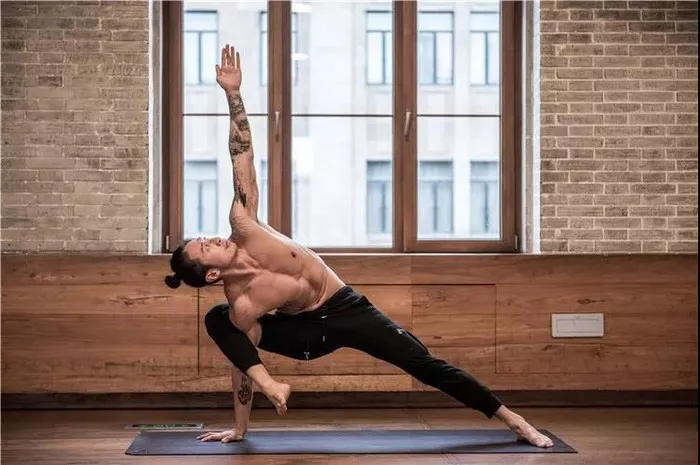The pelvic floor is a crucial group of muscles that supports many essential bodily functions. It forms a hammock-like structure at the base of your pelvis, holding up the bladder, uterus (in females), and rectum. Maintaining a healthy pelvic floor is vital for overall well-being, as it plays a significant role in posture, breathing, and core stability. However, just like any other muscle group, the pelvic floor can become tense or overactive due to stress, poor posture, childbirth, or repetitive strain.
Yoga offers a gentle and effective way to relax and stretch the pelvic floor muscles. By incorporating mindful movement, breathwork, and postural awareness, yoga can help release tension, improve circulation, and foster better connection with this often-overlooked area. Below, we’ll explore six yoga poses specifically designed to help relax the pelvic floor.
1. Child’s Pose (Balasana)
Child’s Pose is a restorative pose that gently stretches the lower back, hips, and pelvic region. It provides a soothing release for the pelvic floor by allowing the muscles to relax in a supported position.
How to Practice Child’s Pose:
- Start on your hands and knees in a tabletop position.
- Bring your big toes together and separate your knees to a comfortable width.
- Sit your hips back toward your heels, extending your arms forward or resting them alongside your body.
- Allow your chest to sink toward the floor and your forehead to rest on the mat.
- Take slow, deep breaths, focusing on expanding your belly and lower back with each inhale.
Benefits:
- Encourages relaxation of the pelvic floor and lower back.
- Promotes diaphragmatic breathing, which indirectly reduces pelvic tension.
- Provides a grounding and calming effect for the nervous system.
Modifications:
- Place a bolster or cushion under your hips or chest for extra support.
- If your knees feel strained, place a rolled blanket behind them or keep the knees closer together.
2. Happy Baby Pose (Ananda Balasana)
Happy Baby Pose is excellent for releasing tension in the pelvic floor and inner thighs. This gentle hip opener invites a playful sense of ease while promoting flexibility and relaxation.
How to Practice Happy Baby Pose:
- Lie on your back with your knees bent and feet flat on the mat.
- Bring your knees toward your chest, then grab the outer edges of your feet with your hands. Keep your ankles directly above your knees.
- Gently pull your feet down while pressing them upward into your hands.
- Relax your head and shoulders on the mat, and let your pelvis feel heavy and grounded.
- Hold the pose for 5–10 deep breaths, swaying gently if it feels comfortable.
Benefits:
- Stretches the pelvic floor, inner thighs, and lower back.
- Encourages pelvic relaxation in a supported supine position.
- Helps improve hip mobility.
Modifications:
- Use a yoga strap around your feet if reaching your feet is challenging.
- Rest your head on a folded blanket for additional support.
3. Reclined Butterfly Pose (Supta Baddha Konasana)
This restorative pose is one of the best for relaxing the pelvic floor. Reclined Butterfly Pose gently opens the hips and groin, allowing the pelvic muscles to soften naturally.
How to Practice Reclined Butterfly Pose:
- Lie on your back with your knees bent and feet flat on the mat.
- Bring the soles of your feet together, allowing your knees to fall outward into a diamond shape.
- Place pillows or yoga blocks under your knees for support if needed.
- Rest your arms by your sides, palms facing upward, and close your eyes.
- Focus on slow, diaphragmatic breathing, directing your breath into your lower belly and pelvic area.
Benefits:
- Relieves tension in the inner thighs and pelvic floor.
- Enhances relaxation through supported hip opening.
- Promotes circulation in the pelvic region.
Modifications:
If lying flat on the floor feels uncomfortable, place a bolster or folded blanket under your lower back and head.
4. Malasana (Garland Pose)
Malasana is a deep squat that promotes lengthening and relaxation of the pelvic floor. This pose is particularly beneficial for improving flexibility in the hips, groin, and ankles.
How to Practice Malasana:
- Stand with your feet slightly wider than hip-width apart, toes pointing outward.
- Bend your knees and lower into a squat, bringing your hips as close to the ground as possible.
- Press your elbows into your inner knees, bringing your palms together in a prayer position at your chest.
- Keep your back straight and your heels grounded. If your heels lift, place a folded blanket under them for support.
- Breathe deeply and hold the pose for 5–8 breaths.
Benefits:
- Stretches and releases tension in the pelvic floor, hips, and lower back.
- Encourages better pelvic alignment and mobility.
- Supports healthy elimination and digestion.
Modifications:
- Use a yoga block or cushion under your hips for support if squatting deeply is uncomfortable.
- Keep your feet slightly closer together if it feels more stable.
5. Bridge Pose with a Block (Setu Bandhasana Variation)
While the traditional Bridge Pose strengthens the pelvic floor, using a yoga block can turn it into a restorative posture that encourages release. This supported version allows the pelvic floor to relax passively while promoting alignment.
How to Practice Bridge Pose with a Block:
- Lie on your back with your knees bent and feet hip-width apart.
- Lift your hips slightly off the mat and place a yoga block or cushion under your sacrum (the bony area at the base of your spine).
- Rest your pelvis on the block, ensuring you feel supported and comfortable.
- Let your arms relax by your sides, palms facing upward.
- Close your eyes and take deep, slow breaths, allowing the pelvic area to soften and relax.
Benefits:
- Gently releases tension in the pelvic floor and lower back.
- Provides passive support to help the pelvic muscles let go.
- Encourages relaxation of the hips and thighs.
Modifications:
- Adjust the height of the block to suit your comfort level.
- Place a folded blanket under your shoulders for added support.
6. Cat-Cow Pose (Marjaryasana-Bitilasana)
Cat-Cow Pose is a dynamic movement that stretches and contracts the pelvic floor, promoting both relaxation and gentle engagement. This pose also improves spinal mobility and encourages mindful breathing.
How to Practice Cat-Cow Pose:
- Begin on your hands and knees in a tabletop position, with your wrists under your shoulders and knees under your hips.
- As you inhale, drop your belly toward the mat, lift your tailbone, and gaze upward (Cow Pose).
- As you exhale, round your spine, tuck your pelvis, and draw your chin toward your chest (Cat Pose).
- Continue flowing between these movements, synchronizing your breath with the motion.
- Repeat for 6–8 full breaths.
Benefits:
- Promotes flexibility and release in the pelvic floor and lower back.
- Encourages coordination between breath and movement.
- Helps alleviate tension and stiffness in the pelvis.
Modifications:
- Place a folded blanket under your knees for added comfort.
- Move more slowly if you feel any discomfort or tightness.
Tips for Relaxing the Pelvic Floor Through Yoga
1. Practice Diaphragmatic Breathing
Deep, diaphragmatic breathing is key to relaxing the pelvic floor. Focus on breathing into your belly and pelvis rather than your chest. This technique activates the parasympathetic nervous system, which promotes relaxation.
2. Avoid Over-Engagement
While strengthening exercises are important, over-engaging the pelvic floor can lead to tightness and discomfort. Balance strengthening practices with relaxation-focused poses.
3. Use Props for Support
Yoga props like bolsters, blankets, and blocks can make poses more accessible and comfortable, especially if you’re new to yoga or dealing with tightness.
4. Be Patient and Consistent
Releasing tension in the pelvic floor takes time and practice. Aim to incorporate these poses into your routine several times a week for the best results.
When to Seek Professional Guidance
While yoga can be incredibly beneficial, persistent pelvic floor issues may require the help of a healthcare professional, such as a pelvic floor physiotherapist. If you experience pain, incontinence, or other pelvic-related concerns, consult a specialist to create a tailored plan.
Conclusion
By integrating these six yoga poses into your routine, you can foster greater relaxation, awareness, and balance in your pelvic floor. Remember to approach your practice with mindfulness and compassion, honoring your body’s unique needs and limitations. With time and consistency, you’ll notice improved comfort, flexibility, and overall well-being.
Related Topics:






















